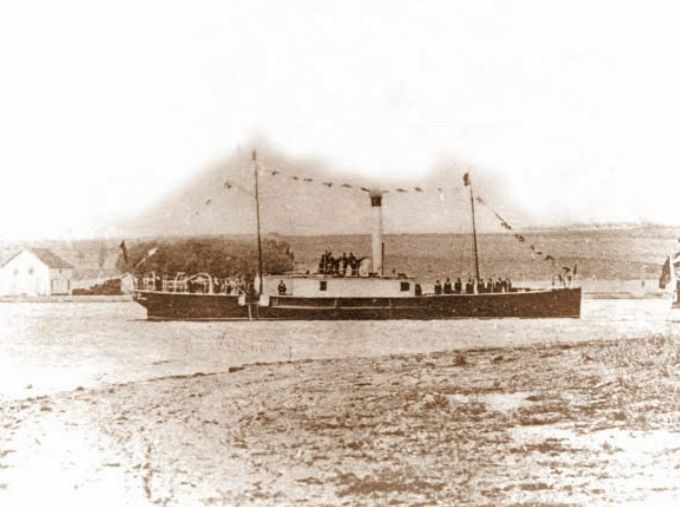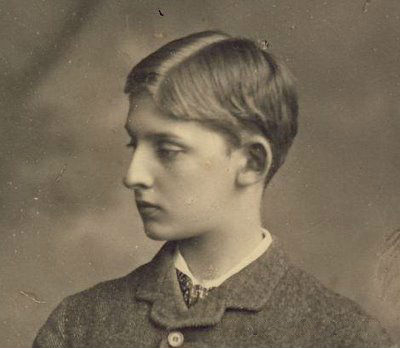|
Constanța Casino
The Constanța Casino ( ro, Cazinoul din Constanța) is a defunct casino, located in Constanța, Romania. It has been designated by the Romanian Ministry of Culture and National Patrimony as a historic monument. The casino is on the Constanța seafront along the Black Sea in the historic ''Peninsulă'' District of the city. Three different buildings were built in the district to hold a casino, with the first structure being erected of wood in 1880. Considered a symbol of the city of Constanța, the current structure was built in Art Nouveau style, designed and built according to the plans of Daniel Renard and inaugurated in August 1910. The current Casino was used for gambling operations for 38 years, with interruption due to the two world wars: attacked and bombed by Bulgarian and German troops in World War I, ravaged in World War II and, at one point, acted as a makeshift wartime hospital. In 1948 it was transformed into a community centre and in 1960 it was handed to the N ... [...More Info...] [...Related Items...] OR: [Wikipedia] [Google] [Baidu] |
Constanța County
Constanța () is a county (județ) of Romania on the border with Bulgaria, in the Dobruja region. Its capital city is also named Constanța. Demographics In 2011, it had a population of 684,082 and the population density was 96/km2. The degree of urbanization is much higher (about 75%) than the Romanian average. In recent years the population trend is: The majority of the population are Romanians. There are important communities of Turks and Tatars, remnants of the time of Ottoman rule. Currently the region is the centre of the Muslim minority in Romania. A great number of Aromanians have migrated to Dobruja in the last century, and they consider themselves a cultural minority rather than an ethnic minority. There are also Romani. Geography *Călărași County and Ialomița County are to the west. *Tulcea County and Brăila County are to the north. *Bulgaria ( Dobrich Province and Silistra Province) are to the south. Economy The predominant industries in the county ... [...More Info...] [...Related Items...] OR: [Wikipedia] [Google] [Baidu] |
Romanian War Of Independence
The Romanian War of Independence is the name used in Romanian historiography to refer to the Russo-Turkish War (1877–78), following which Romania, fighting on the Russian side, gained independence from the Ottoman Empire. On , Romania and the Russian Empire signed a treaty at Bucharest under which Russian troops were allowed to pass through Romanian territory, with the condition that Russia respected the integrity of Romania. Consequently, the mobilization of the Romanian troops also began, and about 120,000 soldiers were massed in the south of the country to defend against an eventual attack of the Ottoman forces from south of the Danube. On , Russia declared war on the Ottoman Empire and its troops entered Romania through the newly built Eiffel Bridge, on their way to the Ottoman Empire. Due to great losses, the Russian Empire asked Romania to intervene. On , the first Romanian Army units crossed the Danube and joined forces with the Russian Army. Romanian proclamation of in ... [...More Info...] [...Related Items...] OR: [Wikipedia] [Google] [Baidu] |
Carol I Of Romania
Carol I or Charles I of Romania (20 April 1839 – ), born Prince Karl of Hohenzollern-Sigmaringen, was the monarch of Romania from 1866 to his death in 1914, ruling as Prince (''Domnitor'') from 1866 to 1881, and as King from 1881 to 1914. He was elected Prince of the Romanian United Principalities on 20 April 1866 after the overthrow of Alexandru Ioan Cuza by a palace coup d'état. In May 1877, Romania was proclaimed an independent and sovereign nation. The defeat of the Ottoman Empire (1878) in the Russo-Turkish War secured Romanian independence, and he was proclaimed King on . He was the first ruler of the Hohenzollern-Sigmaringen dynasty, which ruled the country until the proclamation of a socialist republic in 1947. During his reign, Carol I personally led Romanian troops during the Russo-Turkish War and assumed command of the Russo/Romanian army during the siege of Plevna. The country achieved internationally recognized independence via the Treaty of Berlin, 1878 and ... [...More Info...] [...Related Items...] OR: [Wikipedia] [Google] [Baidu] |
Ferdinand I Of Romania
Ferdinand (Ferdinand Viktor Albert Meinrad; 24 August 1865 – 20 July 1927), nicknamed ''Întregitorul'' ("the Unifier"), was King of Romania from 1914 until his death in 1927. Ferdinand was the second son of Leopold, Prince of Hohenzollern and Infanta Antónia of Portugal, daughter of Ferdinand II of Portugal and Maria II of Portugal. His family was part of the Catholic branch of the Prussian royal family Hohenzollern. In 1889, Ferdinand became Crown Prince of the Kingdom of Romania, following the renunciation of his father (in 1880) and older brother, Wilhelm (in 1886), to the rights of succession to the royal crown of Romania. From the moment he settled in Romania, he continued his military career, gaining a series of honorary commands and being promoted to the rank of corps general. He married in 1893 Princess Maria Alexandra Victoria, later known as Queen Marie of Romania, granddaughter of Queen Victoria and Emperor Alexander II and daughter of Alfred, Duke of Saxe-Cobu ... [...More Info...] [...Related Items...] OR: [Wikipedia] [Google] [Baidu] |
Romanian Leu
The Romanian leu (, plural lei ; ISO code: RON; numeric code: 946) is the currency of Romania. It is subdivided into 100 (, singular: ), a word that means "money" in Romanian. Etymology The name of the currency means "lion", and is derived from the Dutch thaler ( "lion thaler/dollar"). The Dutch ''leeuwendaalder'' was imitated in several German and Italian cities. These coins circulated in Romania, Moldova and Bulgaria and gave their name to their respective currencies: the ''Romanian leu'', the ' Moldovan leu'' and the '' Bulgarian lev''. History First leu: 1867–1947 In 1860, the Domnitor Alexandru Ioan Cuza attempted to create a national ''românul'' ("the Romanian") and the ''romanat''; however, the project was not approved by the Ottoman Empire. On 22 April 1867, a bimetallic currency was adopted, with the leu equal to 5 grams of 83.5% silver or 0.29032 grams of gold. The first leu coin was minted in Romania in 1870. Before 1878 the silver Imper ... [...More Info...] [...Related Items...] OR: [Wikipedia] [Google] [Baidu] |
École Des Beaux-Arts
École des Beaux-Arts (; ) refers to a number of influential art schools in France. The term is associated with the Beaux-Arts style in architecture and city planning that thrived in France and other countries during the late nineteenth century and the first quarter of the twentieth century. The most famous and oldest École des Beaux-Arts is the École nationale supérieure des Beaux-Arts in Paris, now located on the city's left bank across from the Louvre, at 14 rue Bonaparte (in the 6th arrondissement). The school has a history spanning more than 350 years, training many of the great artists in Europe. Beaux-Arts style was modeled on classical " antiquities", preserving these idealized forms and passing the style on to future generations. History The origins of the Paris school go back to 1648, when the Académie des Beaux-Arts was founded by Cardinal Mazarin to educate the most talented students in drawing, painting, sculpture, engraving, architecture and other medi ... [...More Info...] [...Related Items...] OR: [Wikipedia] [Google] [Baidu] |
Daniel Renard
Daniel is a masculine given name and a surname of Hebrew origin. It means "God is my judge"Hanks, Hardcastle and Hodges, ''Oxford Dictionary of First Names'', Oxford University Press, 2nd edition, , p. 68. (cf. Gabriel—"God is my strength"), and derives from two early biblical figures, primary among them Daniel from the Book of Daniel. It is a common given name for males, and is also used as a surname. It is also the basis for various derived given names and surnames. Background The name evolved into over 100 different spellings in countries around the world. Nicknames (Dan, Danny) are common in both English and Hebrew; "Dan" may also be a complete given name rather than a nickname. The name "Daniil" (Даниил) is common in Russia. Feminine versions (Danielle, Danièle, Daniela, Daniella, Dani, Danitza) are prevalent as well. It has been particularly well-used in Ireland. The Dutch names "Daan" and "Daniël" are also variations of Daniel. A related surname develo ... [...More Info...] [...Related Items...] OR: [Wikipedia] [Google] [Baidu] |
Boston (dance)
The Boston refers to various step dances, considered a slow Americanized version of the waltz The waltz ( ), meaning "to roll or revolve") is a ballroom and folk dance, normally in triple ( time), performed primarily in closed position. History There are many references to a sliding or gliding dance that would evolve into the w ... presumably named after where it originated. It is completed in one measure with the weight kept on the same foot through two successive beats. The "original" Boston is also known as the New York Boston or Boston Point. Variations of the Boston include: * The Long Boston also known as the Philadelphia Boston, the Walking Boston or the One Step Waltz. * The One-Step. * The Short Boston,. * The Dip Boston. * The Spanish Boston * The French Boston * The Herring Bone Boston * The English Boston or Three-Step Boston. * The Four-Step Boston or Four-Step Waltz. * The Five-Step Boston or Five-Step Waltz. * The Seven-Step Boston. * Th ... [...More Info...] [...Related Items...] OR: [Wikipedia] [Google] [Baidu] |
Lingua Franca
A lingua franca (; ; for plurals see ), also known as a bridge language, common language, trade language, auxiliary language, vehicular language, or link language, is a language systematically used to make communication possible between groups of people who do not share a native language or dialect, particularly when it is a third language that is distinct from both of the speakers' native languages. Lingua francas have developed around the world throughout human history, sometimes for commercial reasons (so-called "trade languages" facilitated trade), but also for cultural, religious, diplomatic and administrative convenience, and as a means of exchanging information between scientists and other scholars of different nationalities. The term is taken from the medieval Mediterranean Lingua Franca, a Romance-based pidgin language used especially by traders in the Mediterranean Basin from the 11th to the 19th centuries. A world language – a language spoken internationally and ... [...More Info...] [...Related Items...] OR: [Wikipedia] [Google] [Baidu] |
Interwar Period
In the history of the 20th century, the interwar period lasted from 11 November 1918 to 1 September 1939 (20 years, 9 months, 21 days), the end of the First World War to the beginning of the Second World War. The interwar period was relatively short, yet featured many significant social, political, and economic changes throughout the world. Petroleum-based energy production and associated mechanisation led to the prosperous Roaring Twenties, a time of both social mobility and economic mobility for the middle class. Automobiles, electric lighting, radio, and more became common among populations in the developed world. The indulgences of the era subsequently were followed by the Great Depression, an unprecedented worldwide economic downturn that severely damaged many of the world's largest economies. Politically, the era coincided with the rise of communism, starting in Russia with the October Revolution and Russian Civil War, at the end of World War I, and ended with the ri ... [...More Info...] [...Related Items...] OR: [Wikipedia] [Google] [Baidu] |








